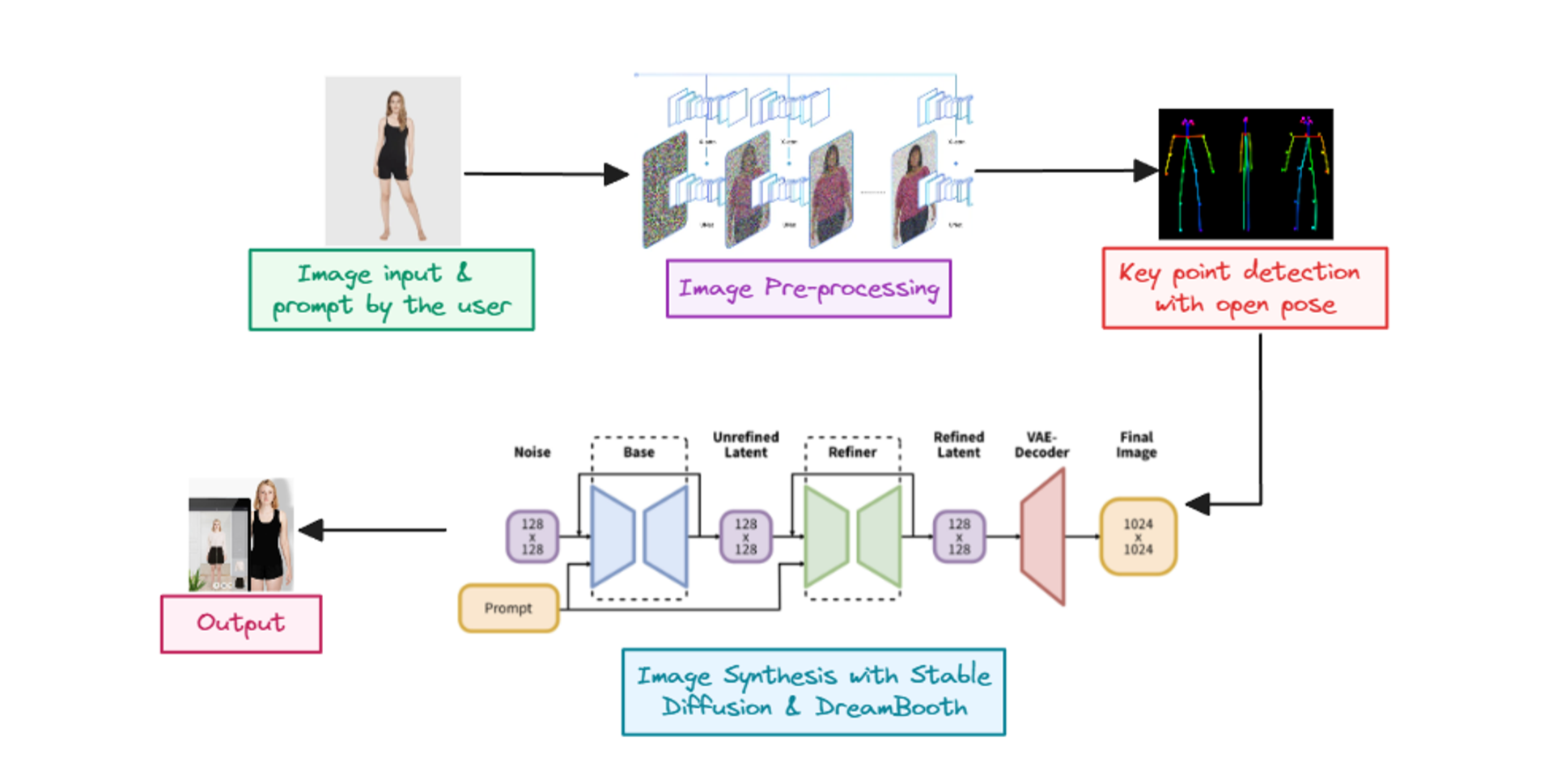Attempting to track down a missing pet is a nightmare you'll want to wake up from as soon as possible. However, with today's technological advancements, purchasing a GPS pet tracker allows you to monitor your pets' whereabouts and reduces anxiety.
There are many options, each with pros and cons, price points, and feature sets. But traditional GPS and Bluetooth trackers have range limitations and offer only a handful of benefits.
So, can AI bridge this gap? Can AI-integrated tools offer more benefits to pet owners and improve their pet’s life? To know more, keep on reading this blog.
What is Pet Tracking?
Pet trackers are GPS locators designed to be worn by domestic animals. These tracking gadgets help pet owners know where their animals are at all times. These devices use global positioning systems (GPS), wireless local area networks (Wi-Fi), or Bluetooth to enable pet owners to monitor their animals in real-time. Dog and cat owners are the primary pet tracker consumers, reflected in the industry's rapid expansion (41% of the total pet wearable market).

Traditional Pet Tracking Devices
Micro Chips
Implanting a small electronic chip under the skin, usually between shoulder blades, is known as "microchipping." A microchip reader can read the number included in the chip to verify its authenticity. Animal control facilities, vet offices, and rescue groups can all contact the pet's owner after finding it by scanning the animal's microchip.
Traditional Fence Systems
Physical fences or border systems have traditionally been used to keep pets contained inside a particular region. Wooden, metal and other material barriers are examples, while underground cables or radio waves are another way to establish virtual limits. Pets wear collars that make a loud noise or give them a little electric shock when they get too close to the barrier.
GPS Tracking Collars
Collars equipped with global positioning system technology have recently seen a surge in popularity. These collars use global positioning system technology to monitor a pet's whereabouts in near-real time. Mobile apps and web-based systems allow pet owners to track their animals and receive alerts when they wander outside a designated area.
Radio Frequency (RF) Tracking
Radio frequency (RF) tracking uses radio waves to pinpoint your pet's whereabouts. The pet wears a signal-emitting collar or tag, and the owner uses a portable receiver to monitor the signal's intensity and whereabouts. This technique is frequently employed for localized tracking or locations with spotty or nonexistent GPS reception.
Bluetooth Tracking
Tracking gadgets with Bluetooth capabilities are compact, lightweight, and easily fastened to a pet's collar. They pair with a smartphone through Bluetooth to let owners track their pets' whereabouts within a limited area. These devices help find a lost pet in a small area, such as a small outdoor space.
Why use Pet Tracking?
Tracking your pet might be useful for several reasons:
Safety and Security
GPS collars and other pet tracking systems can provide peace of mind about the pet's whereabouts. It reduces the chances of an accident, theft, or loss by constantly tracking the pet's location.
Health Monitoring
Some of these collars even monitor the pet's vital signs and activity levels in addition to their location. This information lets pet owners learn a lot about their pet's overall health and activity levels. They can use it to keep tabs on their workouts, spot any irregularities, and make choices regarding their food and fitness regimen.
Training and Competing
People who enroll their pets into competitions like agility trials or obedience contests might benefit from using pet tracking collars. These collars can record the pet's activity throughout training sessions, giving owners valuable information for refining their techniques.
Farm Management
Pet tracking benefits those working or herding dogs and living on large farms or in rural areas. Shepherd dogs and other herding breeds benefit significantly from having their whereabouts and activity tracked by their owners. This is useful for monitoring the cattle and ensuring the dogs do an excellent job with herding.
High-Intensity Activities
Herding dogs, for example, need a lot of excess energy and must be exercised and mentally challenged regularly. Pet owners can benefit from activity trackers by keeping tabs on their dogs to ensure they get enough play time and exercise. This can avoid destructive behavior issues from excess energy.
Data from Pet Tracking
Talk about what kind of data these devices collect.
Location data
GPS-enabled pet monitoring gadgets can give owners regular information on their pet's whereabouts. Using this information, they can then plot their current location and projected path on a map in real-time.

Whistle FIT is an AI-powered pet tracker with superior location-tracking capabilities. It uses GPS technology to transmit your pet's position to a compatible smartphone app in real-time. You may learn your pet's habits and likes thanks to the location data analyzed by AI systems.
With the geofencing features of the Whistle FIT AI Tracker, users can create digital boundaries for their pets. They can set up notifications on the phone to notify them immediately if their pet leaves its designated area or enters an off-limits one.
Health data
Tracking gadgets for pets typically feature accelerometers or equivalent sensors to record your pet's activity. The number of steps your pet takes, the distance it travels, and the number of calories it burns can all be tracked in real-time with the help of this data. Pet tracking gadgets are available now that can even check the pet's heart rate and pulse. This information is gathered in actual time, making it ideal for monitoring their health and picking up on any anomalies.

The Pawbo iPuppyGo is a wearable gadget that monitors your pet's health and activity levels with the help of artificial intelligence algorithms. It records physical activity, such as walking or running, calories burnt, and hours of sleep. The device's AI interprets data and makes health and wellness suggestions for the pet.
Behavior and Mental health data
A pet's behavioral patterns and interactions with its environment can be studied using specific tracking devices. Sensors can pick up on behaviors such as excessive barking, scratching, or anxiousness in your pet. The owners will be able to make sense of the pet's actions in the here and now with the aid of this information.

The artificial intelligence (AI)-integrated Inupathy dog harness decodes dogs' emotions from their heart rate and other physiological signs. This harness employs artificial intelligence algorithms to evaluate the data it collects and displays the results as a color-coded representation of the dog's emotions on a companion smartphone app.

The Petpuls AI Dog Collar is a high-tech gadget that can interpret a dog's bark and vocal pattern thanks to artificial intelligence. It can identify different barks, such as those that indicate hunger, worry, or loneliness, so pet parents can know how their dog feels at any given moment.
How to use the data from Pet Tracking devices
Location Data
Security
The geofencing features of pet monitoring systems allow owners to designate safe areas for their animals. This way, pet owners can ensure their pets stay within specified boundaries. If a pet leaves this area, a warning is delivered to the owner's mobile in real time so they can quickly respond and bring their pet back inside.
Activity Scheduling
Pet owners can arrange walks and other outside activities for their dogs using location data. They can find their pet's favorite routes or spots by examining their previous location patterns. With this knowledge, pet owners can organize more exciting trips based on their likes and dislikes.
Community Engagement
Sharing pet activity heat maps with other app users might help pet owners feel more connected to one another. Because of this, pets can keep track of where their friends are and plan their day in tandem. To find places where they may socialize with other pet owners and their pets, owners can look up the most frequented dog parks, trails, and pet-friendly establishments.
Health Data
Monitoring Activity Levels
Pet owners can keep tabs on their pets' activity levels with the help of health data gathered by pet monitoring devices. This data includes the number of steps taken, the distance covered, and the number of calories burnt. By looking at these parameters, pet owners can ensure they get enough exercise and spot any significant changes that may need care. This information helps spread the word about the benefits of exercise and healthy eating for dogs.
Assessing Overall Health
Tracking a pet's heart rate, pulse, and sleep habits can provide important health information. By monitoring these indicators, pet owners can spot abnormalities or irregularities that may suggest health problems. With this knowledge, pet owners may take preventative precautions and immediately take their animals to the vet if required.
Tailored Exercise and Diet
Each pet's fitness and diet may be adjusted by analyzing their health records. The best way for pet owners to ensure their animals stay at a healthy weight is for them to have a firm grasp on their dogs' individual activity and calorie needs. This individualized method helps people lead healthier lives and avoid weight control problems.
Mental Health Data
Behavior Analysis:
Health and location data reveal a pet's behavior in different conditions. By studying their pets' behavior, pet owners may learn what situations, individuals, or times of day bring on feelings of worry, tension, or terror. With this helpful information, pet owners may care for their pets' mental health better.
Behavioral Training:
The information gathered from observing a pet's habits may be utilized to create individualized training programs. Pet owners who take the time to observe their animals' reactions to novel stimuli or environments can better tailor their training methods and reinforce desirable behaviors. This evidence-based method improves the efficiency of training and aids in shaping a pet's behavior for the better.
Environmental Adaptation:
Analyzing mental health data helps pet owners discover their dogs' environmental discomfort or anxiety. With this information in hand, pet owners may make appropriate home alterations, such as decreasing noise levels or adding secure areas. Pet owners improve their companion animal's mental health and contentment by using this information to make their pet's living situation less stressful.
Wrap Up
AI tools for pet tracking increase accuracy, analyze data intelligently, forecast behavior, provide personalized suggestions, and provide extra layers of security. They are also constantly updated. As a result of these features, AI-integrated technologies are better than traditional GPS and Bluetooth-based systems. AI-integrated pet tracking data helps pet owners to make better decisions for their furbabies, improving their life and connection.





